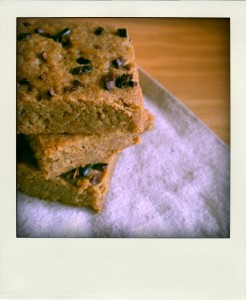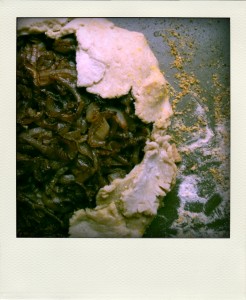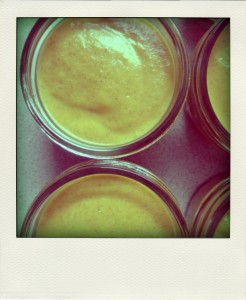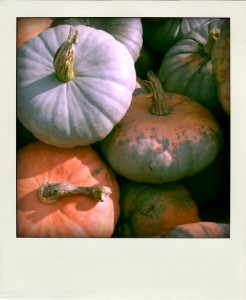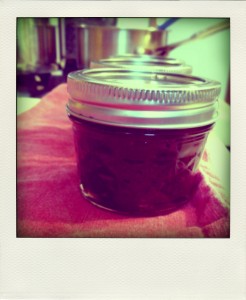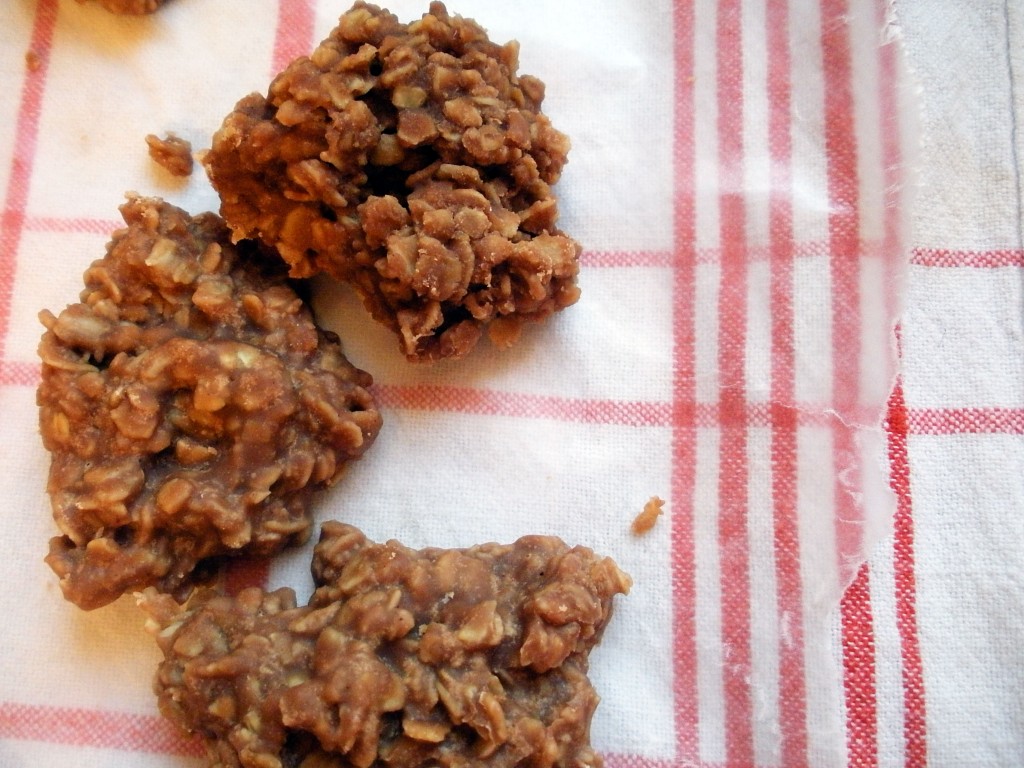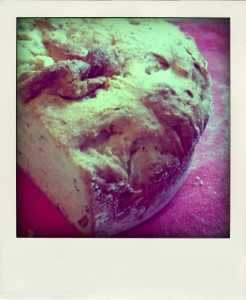Something you may not know about me is Martha Stewart and I share an alma mater. Also, we both heart Westchester County, expensive food, and french bulldogs. CLEARLY WE’RE MEANT TO BE. On that note, in the coming weeks I’ll bring you some Martha-worthy, Autumn-tested edible gifts that won’t end up re-gifted (or used as paper weights). First up, Pomegranate Vanilla Bean Marshmallows.
Ever since my hand mixer and I survived our first batch of homemade marshmallows together, they’ve been one of my favorite treats to impress people with. And eat. Which is perfect since my top priorities are eating and impressing people. Marshmallows are mind boggling, the sort of processed food that we assume a Kraft robot gives birth to fully formed. This will work to your advantage. People will fear you, thinking you’ve sold your soul to corporate food when really all you’ve done is 12 minutes of whipping.
Speaking of corporate food, the kind folks at POM (hearts!) sent me some pomegranate juice to cook with, which was the inspiration for these marshmallows. I replaced all the water in my original recipe with pomegranate juice. I was a bit nervous that the finished product wouldn’t taste pomegranate-y enough, but the results were perfect: just pomegranate-y enough. They’re a lovely shade of light pink and aren’t as perishable as most baked treats, so they ship well. And in the grand tradition of pomegranate 7-up, they’re perfect for the holidays.
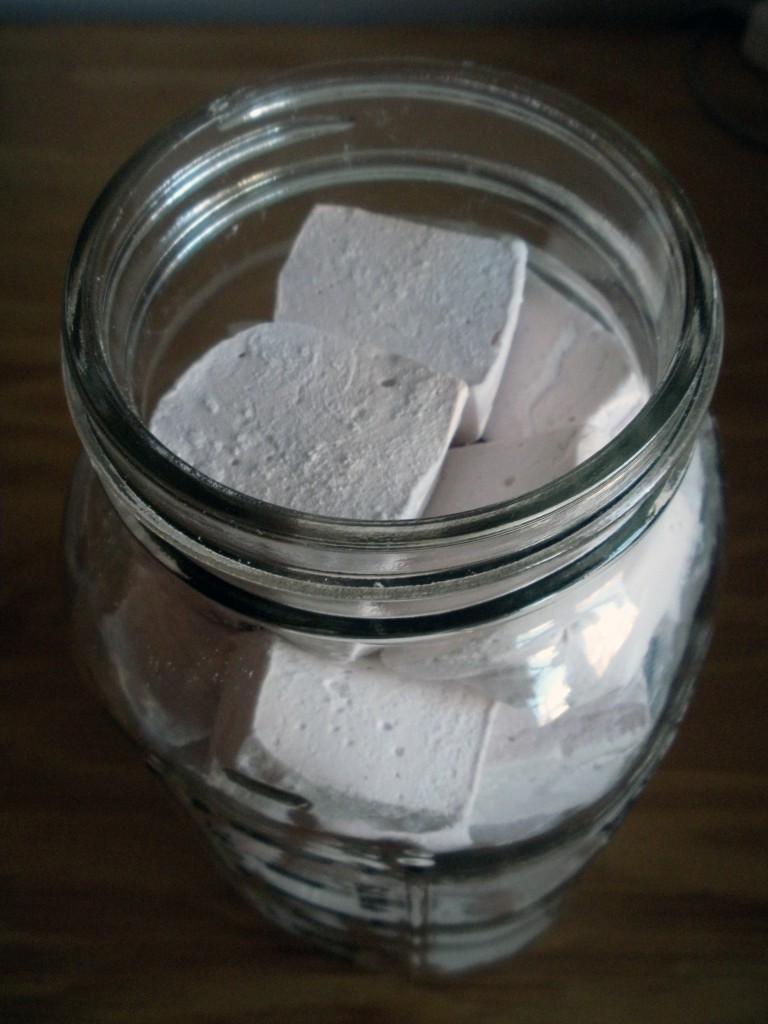
Pomegranate Vanilla Bean Marshmallows
A 9×9 inch square pan lined with oiled plastic wrap works best for these, although an 8×8 will work fine too. Adapted from here and here.
1/2 cup cold pomegranate juice
3 packets Knox unflavored gelatin (.75 oz)
2 cups granulated sugar
2/3 cups light corn syrup
1/4 cup pomegranate juice
1 t vanilla bean paste (or vanilla extract if it’s all you’ve got–make sure both are gluten-free)
confectioner’s sugar and corn starch, as needed
1. In a large bowl (or in the bowl of a stand mixer if you are using one) sprinkle the gelatin over the 1/2 cup pomegranate juice. Let this set while you do step #2 below. A gelatin tip: Try to evenly distribute the gelatin over the surface as much as you can. This will help the gelatin dissolve evenly and prevent you from getting little gelatin clumps in your final product.
2. While the gelatin is dissolving, heat the sugar, corn syrup, and 1/4 cup juice in a saucepan, stirring occasionally. Bring to a boil and let boil for 1 minute. (PS: Careful dears, hot sugar is hot!)
3. Remove the syrup from the heat and carefully pour into the gelatin.
4. If you are using a stand mixer, use the whisk attachment to beat on high for 12 minutes.
5. If you are using a hand mixer, again, be careful of hot splatters. If you have gloves, it would make me feel better if you wore them. I started my hand mixer on low and increased the speed gradually, stood back, and didn’t get much splashing at all. I also used a bowl with high sides. Beat the mixture on high for 12 minutes. At the very end of the mixing process, stir in the vanilla paste/extract.
6. Pour into the oiled, plastic wrap lined pan.
7. Oil another piece of plastic wrap and press it on top of the marshmallow. You want the wrap touching the surface of the marshmallow. Allow to set for a few hours or up to overnight.
8. Mix equal parts cornstarch and confectioner’s sugar in a small bowl. Start with a little and make more if you need it. I began with 2 T of each and didn’t need a lot more than that.
9. Sprinkle a sheet of wax paper (or Silpat mat, if you’re fancy) with the sugar/cornstarch mixture. Remove the top layer of plastic wrap. Unmold the marshmallow, upside down, onto the wax paper, by lifting up on the plastic wrap that lines the pan.
10. Remove the sheet of plastic wrap that was lining the pan and spread some sugar/cornstarch mixture on top of the marshmallow.
11. Use a knife to cut into your desired marshmallow size and dredge the remaining sides of the marshmallows in the excess sugar/cornstarch mixture that is on the wax paper. Add more if needed.
12. Store in an airtight container until ready to eat or give. I’m planning to gift these in a large Ball jar, like the one I used to make butter in.

{ 5 comments }



